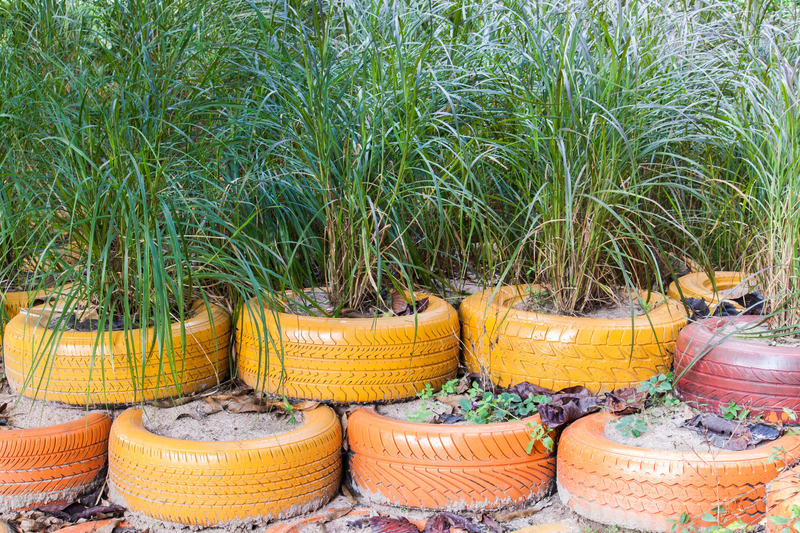Recycled Plastic Journey
Posted on 24/09/2025
The Journey of Recycled Plastic: From Waste to Wonder
Introduction to the Plastic Problem
Plastics have become an integral part of our daily lives. From packaging and household items to industrial goods, the versatility and utility of plastic are unmatched. However, this convenience comes at a significant environmental cost. The production and disposal of plastics contribute to pollution and resource depletion. Thankfully, the journey of recycled plastic is a step in the right direction towards mitigating these effects.

Collection and Sorting of Plastics
The first step in the recycling journey is the collection of plastic waste. This can occur through curbside recycling programs, drop-off centers, or deposit/refund schemes. Once collected, the plastics are transported to a recycling facility where they are sorted based on type and color. Advanced technology, including infrared sensors and automated sorting machines, aid in separating different kinds of plastics.
Cleaning and Shredding
Upon sorting, the plastics undergo a thorough cleaning process to remove impurities such as food residue, adhesives, and paper labels. This step is crucial because contaminants can compromise the quality of the recycled material. After cleaning, the plastics are shredded into small flakes or pellets. This stage is essential for the subsequent processes of melting and reshaping the plastic material.
Melting and Reforming
The shredded plastic is then melted down. Different types of plastics require varying temperatures and conditions to achieve a consistent molten state. The molten plastic is extruded through fine screens to remove any remaining contaminants and form uniform strands. Once cooled, these strands are cut into smaller granules or pellets ready for molding.
Creation of New Products
The recycled plastic pellets are now ready to be transformed into new products. Injection molding, blow molding, and extrusion are common methods employed in this phase. Recycled plastics can be repurposed into a variety of items, including bottles, containers, furniture, textiles, and even construction materials. This step epitomizes the culmination of the recycled plastic journey, as waste is reborn into something valuable and functional.
Pros and Cons of Recycling Plastic
Here are the advantages and disadvantages of recycling plastic:
Pros:
1. **Reduces Pollution:** Recycling plastic significantly reduces plastic waste in landfills and oceans.
2. **Saves Resources:** Conserves petroleum and reduces the need for new plastic production.
3. **Energy Efficient:** Produces fewer greenhouse gases compared to manufacturing new plastic.
4. **Economic Benefits:** Creates job opportunities in the recycling and manufacturing sectors.
5. **Promotes Sustainability:** Supports a circular economy and encourages sustainable practices.
Cons:
1. **Quality Issues:** Recycled plastic often has lower quality and can be less durable.
2. **Complex Sorting:** Requires advanced sorting technology to separate various plastic types.
3. **Limited Recycling Facilities:** Not all regions have adequate recycling infrastructure.
4. **Contamination Risk:** Presence of contaminants can lower the efficiency of the recycling process.
5. **Economic Viability:** Sometimes, recycling plastic may not be financially profitable.
Tips for Effective Plastic Recycling
1. **Rinse Before Recycling:** Always clean your plastic items before placing them in the recycling bin.
2. **Check Local Guidelines:** Familiarize yourself with your locality's recycling rules to avoid contamination.
3. **Avoid Single-Use Plastics:** Opt for reusable items to reduce plastic waste.
4. **Participate in Programs:** Support and participate in local recycling programs and initiatives.
5. **Educate Others:** Spread awareness about the benefits and methods of plastic recycling.

Takeaways from Recycled Plastic Journey
Understanding the journey of recycled plastic highlights the importance of proper disposal and the broader impacts on the environment. Recycling plastic not only conserves resources but also significantly reduces pollution. However, the process requires community effort and technological advancements to be truly effective.
Conclusion
The journey of recycled plastic demonstrates a hopeful and sustainable path for managing plastic waste. While challenges still exist, the benefits of recycling plastic far outweigh the cons. By adopting better practices, supporting recycling initiatives, and staying informed, we can all contribute to a cleaner, greener future.



